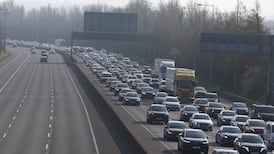The Brussels memorial sculpture was unveiled on Wednesday, one year to the day since the Islamist terror attacks on the city which claimed 32 lives as well as those of the three bombers. Its inscription: "Wounded but still standing in the face of the unthinkable".
And in Westminster on Wednesday the unthinkable happened again. The attack, apparently by a lone assailant, resulted in five deaths including one police officer and the assailant, with over 20 injured, three of them also police officers. Witnesses say that the attacker, armed with two large knives, mowed down pedestrians with his car on Westminster Bridge, including three 15- and 16-year-olds from a group of visiting French schoolchildren. Two of the latter were reported to be in a critical condition.
The attacker then rushed at the gates in front of the Houses of Parliament, stabbing the policeman before being shot dead by other officers.
Police were quick to declare the attack “a terrorist incident”, although no information was forthcoming about the identification of the assailant and police were keeping an open mind about whether a second person was in the car.
Once again, but for the first time this year, the long reach of international Islamist terrorism has extended into one of Europe's capitals and major cities. With al-Qaeda and Islamic State being forced back on the battlefields of Iraq and Syria the latter in particular began to plan to take the war to Europe. Security services have scrambled to put in place surveillance on returning jihadists.
In the wake of the November 2015 attacks in Paris in which 137 died, there have been some 10 terrorist-related stabbing, shooting and machete attacks, several fatal, last year across Europe. Large-scale attacks happened in Brussels (March – 34 dead), Nice (July – 84 dead), Berlin (December – 12 dead), Munich and Ansbach in southern Germany (July – 9 dead, and 15 wounded in latter), Istanbul (January and June – 10 and 45 dead) ....
There has been an expectation by the security services that other attacks were on the way, and multiple alerts, false alarms and been triggered and plots had been uncovered. Britain is currently on its second-highest alert level of “severe” meaning an attack by militants was considered highly likely. Westminster Palace was perhaps the most obvious and high-profile of targets although one of the most heavily-guarded locations in the UK. Without the high level of security, improved this year after an attempted break-in, the casualty list could have been much higher.
It was not the first attack on London by Islamist terrorism. The July 7th, 2005, London bombings, sometimes referred to as 7/7, were a series of co-ordinated terrorist suicide bomb attacks in central London targeting the public transport system during the rush hour. Fifty-two people died and more than 700 more were injured, Britain’s worst terrorist incident since the 1988 bombing of Pan Am Flight 103 over Lockerbie.
In 2013, in an al-Qaeda inspired attack, two men murdered soldier Lee Rigby near a military barracks in London. The city continues to be a target, in the same way that capital cities of Europe are selected in pursuit of maximum impact.









